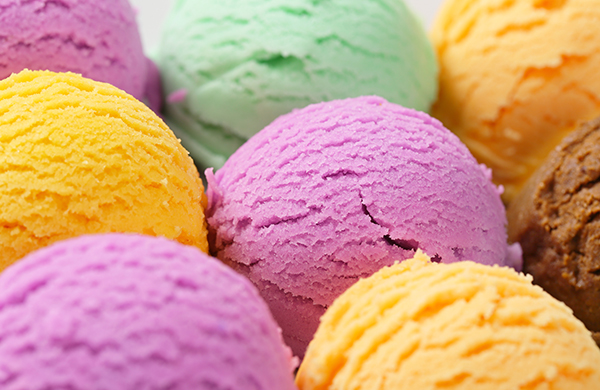
Fun fact: "gelato" is not the Italian word for ice cream.
Yes, it is used to describe a creamy, frozen treat that bears a striking resemblence to ice cream, but anyone who has tried the dessert knows that it has its own unique taste and consistency. So just what is gelato anyway?
Gelato vs. Ice Cream: The Basics
Both gelato (which literally translates to frozen in Italian, btw) and ice cream are made using similar ingredients and similar techniques, but subtle differences in both of these factors add up in a big way.
American ice cream, for example, is traditionally made using milk, cream, sugar, and egg yolks, making it essentially a frozen custard. Gelato, by comparison, uses more milk than cream, and gelato recipes almost never include eggs. Both mixtures are then churned and frozen—BUT the crucial difference between gelato and ice cream is the speeds at which they are churned. Ice cream is churned fast, while gelato is churned much more slowly, and this difference in speed produces two very different desserts.

Which one is healthier?
Yeah, so nobody is gonna argue that any sort of frozen dessert made from cream and sugar is diet-friendly, but if you're the type of person who evaluates the fat content of every morsel you put in your mouth, you might find the gelato vs. ice cream debate of particular interest.
As noted above, ice cream contains a higher ratio of cream to milk than gelato, which means it has more butterfat content. By definition, an ice cream must contain at least 10% fat, but the percentage can also be quite a bit higher. Gelato, by comparison, typically weighs in at about 4–8% fat, since it uses mostly milk. So does that mean gelato is better for you? Maybe—but not always, because gelato is actually denser. Which brings us to...
Air: the secret ingredient
Foods—all foods—contain mostly water. And, as we all know, when water freezes, it turns into ice. That's as true for the ingredients that go into ice cream or gelato as it is for any bag of peas or frozen dinner we toss in our freezer. So how does ice cream not turn into a hard icy block when frozen?
The churning process is crucial because it introduces air into the ice-cream-making process. The fat emulsifies, which helps prevent the formation of hard ice crystals, and as more air is worked into the cream, the mixture becomes fluffier and softer. Ice cream is churned at a much higher speed than gelato, which means it has much more air pumped into it. This added air can make the ice cream's volume increase anywhere from 25% to 90%. Since gelato is churned at a much slower speed, it contains far less air. It's a textural difference you can see: a scoop of ice cream appears fluffy, almost cloudlike, while gelato is smooth, soft, and elastic.

Cold and colder
BUT WAIT, you might be saying. If gelato has less air, and air is what keeps ice cream from getting hard as a rock, then why is gelato so much softer than ice cream?
If your gelato were served at the same temperature as ice cream (around 10°F), you might break a tooth. Luckily, it's typically served about 15 degrees warmer, which allows it to stay soft and pliable. By that same token, if ice cream were served as warm as gelato, it wouldn't be able to keep its shape. All that extra fat would simply melt into a sweet, delicious puddle.
Okay, okay... But which one tastes better?
That's strictly a matter of preference. Many gelato experts argue that the added fat in ice cream coats your tongue and dulls your sense of taste. Because gelato has less fat, they argue, the flavors are brighter and more intense. But you could just as easily make the case that ice cream's added fat content (and eggy texture) makes it taste richer and more indulgent. It's hard to play favorites, though, and at the end of a hot summer day we'll gladly take a scoop (or two) of either!






